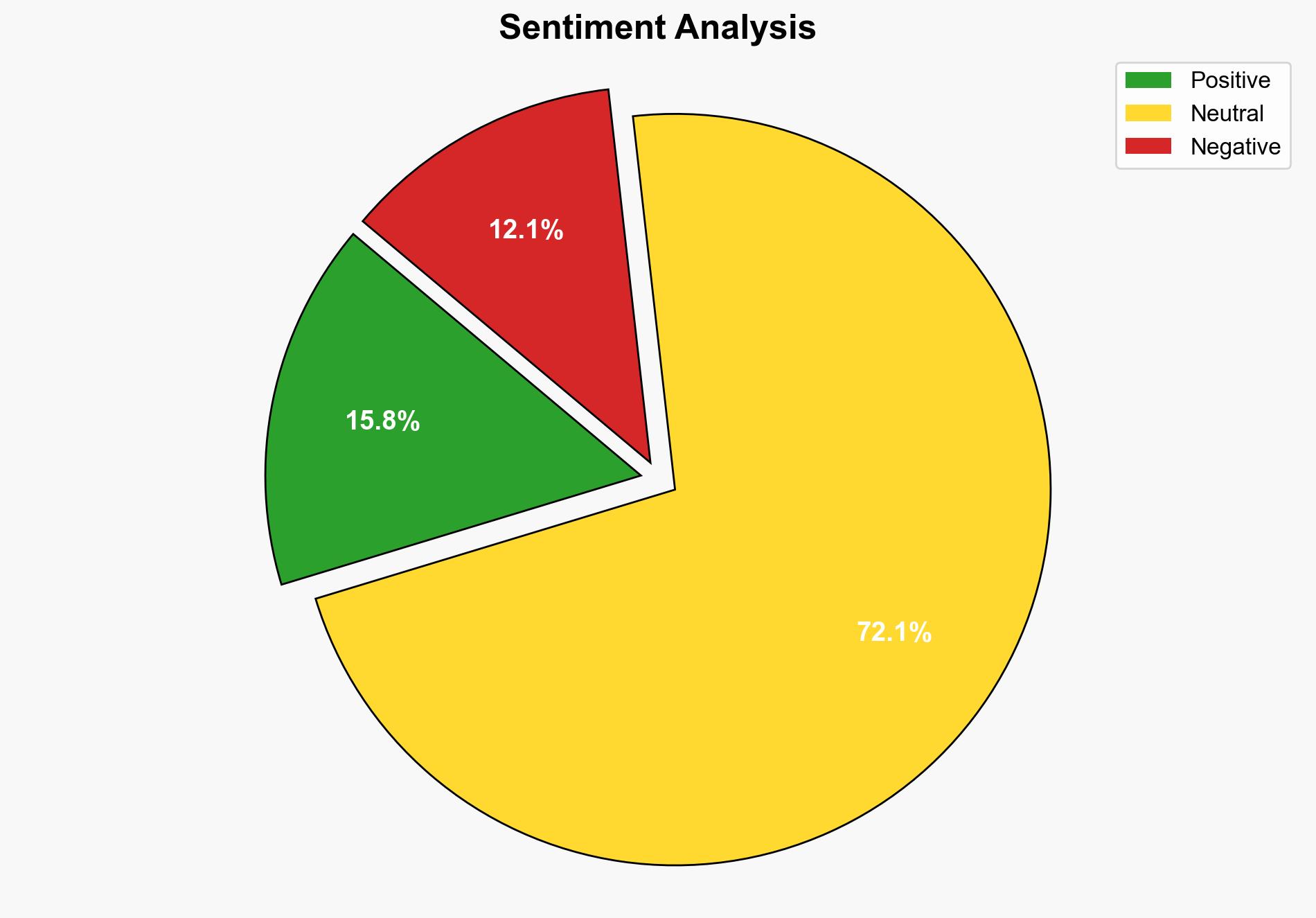Air Forces 10-year fighter jet report is missing key details experts say – Defense One
Published on: 2025-10-30
Intelligence Report: Air Forces 10-year fighter jet report is missing key details experts say – Defense One
1. BLUF (Bottom Line Up Front)
The most supported hypothesis is that the Air Force’s 10-year fighter jet report lacks critical details due to strategic ambiguity aimed at maintaining flexibility in defense planning. Confidence in this assessment is moderate, given the absence of explicit future year defense program data and the potential for political maneuvering. Recommended action includes advocating for increased transparency and detailed reporting to ensure alignment with national security needs.
2. Competing Hypotheses
1. **Strategic Ambiguity Hypothesis**: The report intentionally omits key details to maintain strategic flexibility and avoid committing to specific procurement numbers that could be influenced by future geopolitical changes or budget constraints.
2. **Oversight and Resource Constraint Hypothesis**: The omissions are due to oversight or resource constraints, reflecting a lack of coordination and communication within the Air Force and between the Air Force and Congress.
Using ACH 2.0, the first hypothesis is better supported by the deliberate absence of a future year defense program and the strategic goals outlined without specific commitments. The second hypothesis is less supported due to the structured nature of defense reporting and the expectation of thorough oversight.
3. Key Assumptions and Red Flags
– **Assumptions**: The Air Force has the capability to adjust its plans based on changing circumstances. Congress and defense experts have access to sufficient information to make informed decisions despite the report’s omissions.
– **Red Flags**: Lack of detailed procurement plans and future year defense program data. Potential cognitive bias towards assuming strategic intent without considering bureaucratic inefficiencies.
4. Implications and Strategic Risks
The lack of detailed planning could lead to misalignment with national security needs, potentially weakening defense capabilities. Economic implications include inefficient allocation of defense budgets. Geopolitically, this could signal uncertainty to allies and adversaries, affecting international defense postures. The risk of escalating tensions due to perceived gaps in military readiness is a concern.
5. Recommendations and Outlook
- Advocate for increased transparency in defense reporting to ensure alignment with strategic goals.
- Encourage collaboration between the Air Force and Congress to address resource constraints and improve oversight.
- Scenario Projections:
- Best Case: Enhanced transparency leads to optimized resource allocation and strengthened defense capabilities.
- Worst Case: Continued ambiguity results in strategic misalignment and weakened defense posture.
- Most Likely: Incremental improvements in reporting and oversight, maintaining current defense capabilities.
6. Key Individuals and Entities
– Troy Meink
– Todd Harrison
– Dave Deptula
– Lockheed Martin
7. Thematic Tags
national security threats, defense procurement, strategic planning, military readiness




